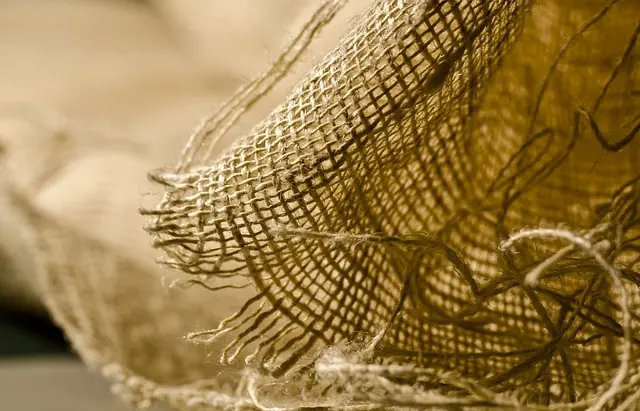African root kratom, from the Mitragyna speciosa tree, has been recognized for its potential to alleviate muscle soreness and is gaining popularity within health and wellness circles. Preliminary studies suggest that its unique alkaloids may interact with opioid receptors to provide pain relief. The African root variety of kratom, known for its distinct alkaloid profile, is believed to offer particularly potent analgesic effects. User experiences indicate it can promote relaxation and aid in recovery from muscle soreness, potentially caused by physical exertion or injury. However, users should approach kratom with caution as individual responses can vary significantly based on dosage and health status. It's crucial for individuals to consult healthcare professionals before using kratom due to its complex effects and potential legal restrictions. The therapeutic potential of kratom is under scientific investigation, focusing on both its benefits and risks to inform safe and effective use in pain management. Users should prioritize sourcing pure, high-quality kratom and adhere to professional medical advice to maximize its therapeutic effects while minimizing risks. Safe and informed use of African root kratom is essential for those interested in its natural pain relief properties.
Explore the natural pathway to muscle soreness relief with kratom, an African root revered for its potential healing properties. This article delves into the science behind kratom’s active alkaloids and their promise for effective muscle recovery. Learn how to safely and effectively incorporate this botanical into your wellness regimen, unlocking the secrets to soothing soreness without compromise. Join us as we uncover the depth of kratom’s benefits for a healthier, more resilient body.
- Unraveling the Potential of African Root Kratom for Muscle Soreness Relief
- Understanding Kratom's Active Alkaloids and Their Role in Muscle Recovery
- Integrating Kratom into Your Regimen Safely and Effectively for Soreness Alleviation
Unraveling the Potential of African Root Kratom for Muscle Soreness Relief

African root kratom, derived from the Mitragyna speciosa tree native to Southeast Asia, has garnered attention in various health and wellness circles for its potential therapeutic properties. One of the most prominent uses under investigation is its role in muscle soreness relief. Studies suggest that the alkaloids present in kratom leaves may interact with opioid receptors in the brain, potentially offering pain-relieving effects. This interaction could be particularly beneficial for individuals experiencing muscle soreness, whether from intense physical activity, injury, or other causes. The African root variety of kratom is often highlighted due to its distinct alkaloid profile, which may enhance its analgesic effects and make it a promising option for those seeking natural alternatives to manage pain. Users report that consuming kratom can lead to a sense of relaxation and reduced discomfort in muscle tissue, allowing for improved recovery and mobility.
Furthermore, the application of African root kratom for muscle soreness relief is not without its nuances. It’s important to approach its use with caution, as individual responses to kratom can vary significantly. Factors such as dosage, frequency of use, and personal health conditions can influence the efficacy and safety of kratom. As such, prospective users should consult with healthcare professionals before integrating African root kratom into their wellness regimen. Additionally, ongoing research is crucial to elucidate the full extent of its benefits and potential risks, ensuring that users have access to accurate and up-to-date information for informed decision-making. The exploration of African root kratom’s properties continues to expand, offering a beacon of hope for those in search of effective relief from muscle soreness.
Understanding Kratom's Active Alkaloids and Their Role in Muscle Recovery

Kratom, an African root with a rich historical and medicinal background, contains a complex array of active alkaloids that have garnered attention for their potential benefits in muscle recovery and soreness relief. Mitragynine and 7-hydroxymitragynine are two primary alkaloids found in kratom leaves. These compounds interact with the body’s opioid receptors, which may help to manage pain associated with muscle soreness. The analgesic properties of these alkaloids can provide relief from intense discomfort, allowing individuals to engage in physical activities without the fear of excessive post-exercise pain. Additionally, kratom is believed to influence the central nervous system, potentially reducing inflammation and accelerating the healing process of muscle tissues. This dual action of pain management and anti-inflammatory effects could contribute to its use as a natural aid for muscle recovery among athletes, fitness enthusiasts, and those recovering from injuries or intense physical exertion. Understanding the role of kratom’s alkaloids is crucial for anyone considering it as part of their recovery regimen, as it may offer a safer and more natural alternative to conventional pain medication. However, it is essential to approach its use with caution, adhering to recommended dosages and consulting healthcare professionals for safe and effective integration into a muscle recovery plan.
Integrating Kratom into Your Regimen Safely and Effectively for Soreness Alleviation

When considering muscle soreness relief, the African root kratom has gained attention for its potential benefits. To integrate kratom into your regimen safely and effectively, it’s crucial to approach its use with caution and informed dosing. Kratom, derived from the Mitragyna speciosa tree native to Southeast Asia, contains alkaloids that may interact with your body’s pain receptors, offering relief from muscle soreness. Before incorporating kratom into your routine, it’s advisable to consult with a healthcare provider, especially if you have underlying health conditions or are taking other medications. The recommended dosage can vary based on individual factors such as weight, tolerance, and the severity of pain; thus, starting with a low dose and gradually increasing it under professional guidance is prudent. Additionally, the choice of kratom strain—Maeng Da, Bali, or Indo, for example—can affect its efficacy, with some strains being more potent than others. It’s also important to be aware of the legal status of kratom in your region, as it is subject to regulation in many countries and states.
For those who choose to use kratom for muscle soreness, it’s essential to monitor its effects and adjust your intake accordingly. Regular exercise and proper nutrition remain foundational elements in managing muscle health and recovery. Kratom can be a complementary aid, but it should not replace these core practices. Moreover, ensuring you have a reliable source for kratom is paramount, as the purity and quality of the product directly influence its safety and effectiveness. Regularly testing your kratom supply for contaminants and adulterants is a proactive step in maintaining your health. By combining these best practices with professional medical advice, you can explore the potential benefits of kratom as an African root remedy for muscle soreness relief. Always prioritize safe and informed use to maximize its therapeutic effects while minimizing risks.
In our exploration of natural remedies for muscle soreness, the African root kratom has emerged as a promising option. Its active alkaloids offer a potential avenue for muscle recovery, with a growing body of anecdotal and some scientific evidence supporting its use. By integrating kratom into your wellness regimen responsibly and with proper guidance, individuals may find relief from discomfort. It is crucial to approach the use of kratom with caution, adhering to safe dosage guidelines and considering potential interactions with other substances. As with any health-related decision, consultation with a healthcare provider is essential. With careful consideration and informed use, kratom may be a valuable addition to your muscle soreness relief strategies.






